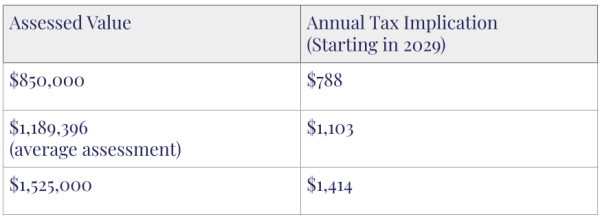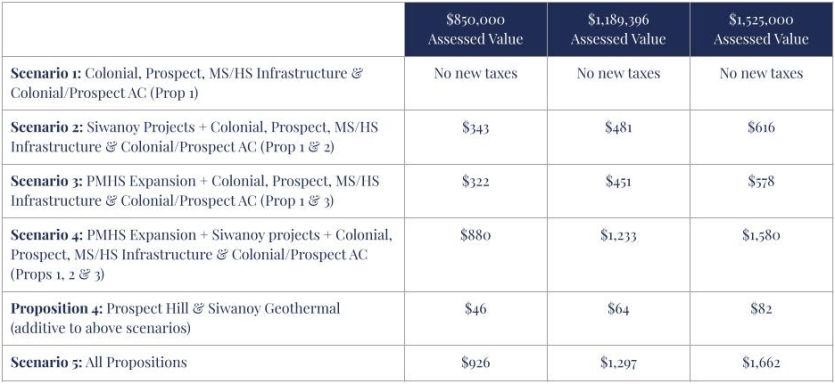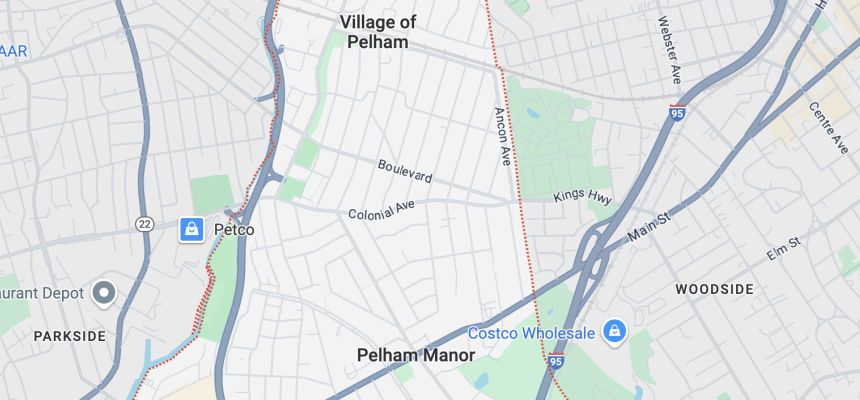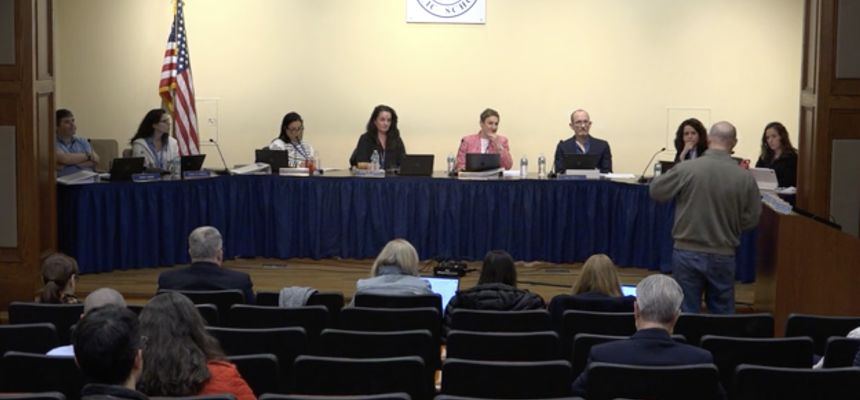
The Pelham Board of Education reached consensus Monday on borrowing $141.2 million via bond sales to fund capital projects, including an addition at the secondary campus, another for Siwanoy Elementary School that would leave the building’s wings intact, major repairs for district facilities and installation of air conditioning in the three elementary buildings that lack it.
The school board left open whether it will put more than one proposition for the different projects on the ballot during the district’s election on May 20. “As it finalizes the scope of work, the board will also consider whether to split the scope of projects into separate propositions to be voted on by the community,” said a bond update emailed to residents. The update also indicated that the timing of the vote might perhaps change, saying it “could occur in May or at another time determined by the board.”
Asked about a vote in May or sometime later in the future, a district spokesman said “the board continues to work on a timeline that would allow for a vote on May 20; however, until it passes a final resolution” and other required measures, the board “has the discretion to amend that timeline.”
During the work session, the board settled on a draft “scope of projects” that would include:
- $38.9 million for a three-story expansion connecting Pelham Memorial High School and Pelham Middle School near Ingalls Field that would have eight new science labs and a student commons to provide a flexible area for lunch and group work. This project would also see work done on a portion of the annex. “An additional $1.2 million could be budgeted for renovation of the existing middle school technology room into district administrative offices,” said the bond update.
- $28 million for an addition at the rear of Siwanoy attached to the current gym that would add elevators and ramps to make Siwanoy accessible under the Americans with Disabilities Act (ADA), eight new classrooms sized in line with current standards, additional small group instructional space and a cafeteria below the gym. (The proposal would mean a net increase of three classrooms in the school, as the space occupied by five current rooms would be used for the elevators and cafeteria.)
- $54.3 million in infrastructure work to address water intrusion at district buildings, replace the Prospect Hill Elementary School roof and do roof repairs at Colonial Elementary School and PMS, and install hydronic systems in place of steam boilers at Colonial, Prospect Hill, Siwanoy and PMHS.
- $14.4 million to install central AC at Colonial, Prospect Hill and Siwanoy.
- $4.5 million for geothermal heating and cooling systems at Siwanoy and Prospect Hill.
The draft scope means the trustees ruled out a more expensive project at Siwanoy that would have demolished the building’s wings. That approach ran into opposition from residents. Board members also cut central AC and a geothermal system for PMHS from the project list.
According to the emailed bond update, the financial impact of the new borrowing would be offset by the retiring of service on $65 million in existing bonds, as well as 50% project reimbursement from the state. The district is also exploring grants and federal tax credits for the geothermal systems.
The following chart from the district shows the estimated annual property tax increases for three different home valuations that would result from issuing the bonds, assuming the retired debt, state aid and anticipated borrowing costs but without the grants or tax credits included.

Five days earlier at the board of education’s regular business meeting, Superintendent Dr. Cheryl Champ presented a preliminary budget for the 2025-26 school year that would increase spending 2.9% to $96.3 million. The property tax levy would rise 3.69%, which is the maximum allowed under the state formula that caps increases. The final budget adopted by the board this spring will also be on the ballot May 20.
“This budget proposal provides the resources to address both immediate and long-term needs in line with our new strategic plan and keeps with the budget guidance provided by the board of education this past October,” said Champ in the overview that accompanied the budget documents. “This preliminary budget strives to provide needed academic and social-emotional supports to help our students flourish and maintain the rich program offerings our students and community expect from our schools. This budget is attentive to sustainability of operating costs. As this budget was developed, we scrutinized spending to ensure resources are used efficiently and in the areas that align with and support the goals of our strategic plan.” (See the slides from Champ’s presentation on the spending plan here.)

Also during the meeting, Walter Hauser from KG&D architects presented an updated capital project planning slideshow, which included the $28 million proposal for Siwanoy (labeled Option B) that the board would end up including in the draft scope of projects at the work session five days later.
Hauser discussed the feedback the district got from its information sessions, an online survey, discussions with teachers and administrators and input from the board’s facilities committee. “There were a number of comments about the efficiency of the work,” he said. “Is there a way to make it more efficient and take advantage of the possibilities in the existing building?”
As summarized by the district in its email, feedback also included:
- Create a more efficient design with a smaller footprint.
- Be considerate of Siwanoy’s outdoor space.
- Siwanoy’s historical architecture is important.
- Improve stormwater runoff.
- Create a more secure rear play area.
- Renovations should include door security upgrades.
- Maintain the pathway through the Siwanoy campus.
- Do not allow vehicular access to the site.
Champ said the board of education will continue to focus on community engagement.
During public comment, resident Adam Illkowitz said, “Some of the statistics you were showing around square footage per student—one of the things you didn’t show was outdoor space per student. And I think we also didn’t see what the world looks like post Option B. I’m concerned with the amount of construction we are doing relative to the differences between Siwanoy and some of the other schools, even Prospect. Something I’m hearing from people in general and my first reaction to new proposal B is that it’s still too big, and the way that it’s still too big is that it’s way too close to the property line. That would violate in some ways Pelham Manor zoning.”
“Could I just say—just so you know, to that point—we are only authorized to build what gets approved to build, so there are some constraints around that,” said Champ. “Obviously, design things will change, and I hear what your concern is for $30 million for Siwanoy. We can’t just turn around and spend it somewhere else.”







